Bhutan, Nepal & the Mystical Himalayas
October 5-27, 2011
BHUTAN - October 7-13, 2011
Page Two - Paro, Bhutan and drive over Dochula Pass
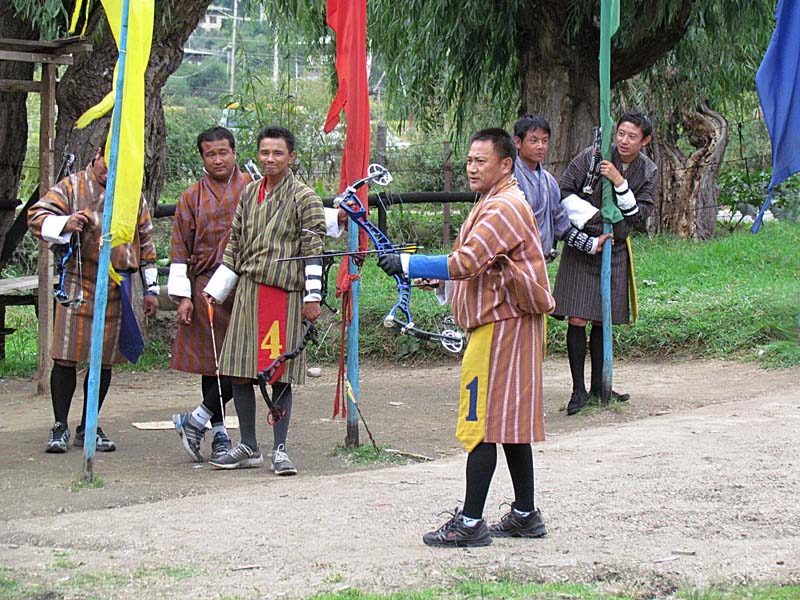
Archery
is the national sport in Bhutan, and competitions are held regularly in most villages. This is an archery match in Paro.
Archery in Bhutan differs from Olympic standards in technical details such as the placement of the targets.
There are 2 targets placed over 100 meters apart and teams shoot from one end of the field to the other.
Each member of the team shoots 2 arrows per round. Traditional Bhutanese Archery is a social event and competitions
are organized between villages, towns, and amateur teams.
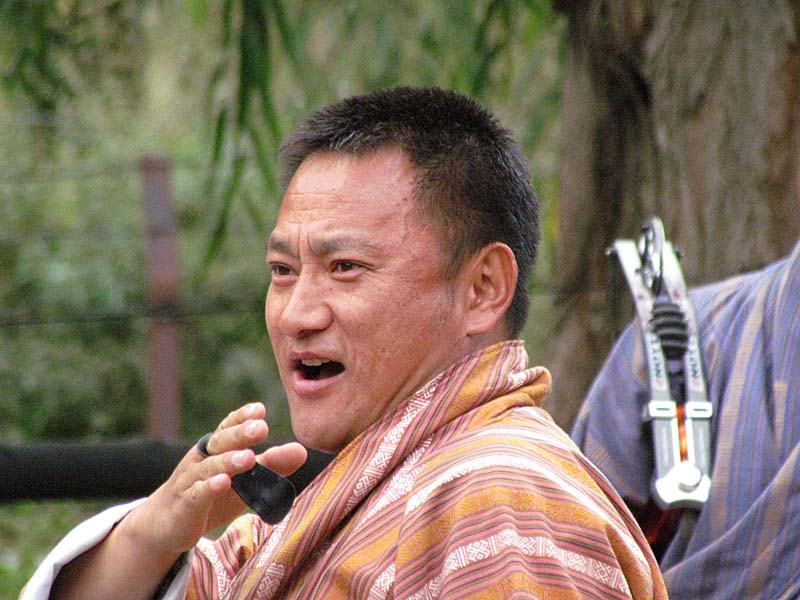
You can tell that he hit the bullseye. He's proud of his shot.
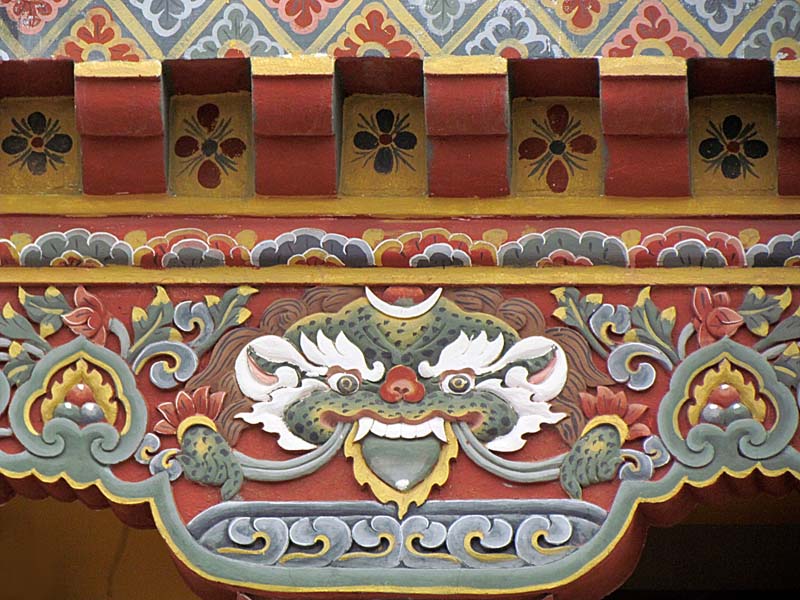
Decoration on a Bhutanese home.
Traditionally, Bhutanese houses are made out of mud, bamboo, and wood.
The doors, walls, and windows of Bhutanese houses are decorated with animal, religious, or floral designs.
The houses usually consist of three stories. The cattle and other animals of the house reside on the ground floor,
the second floor is for storage, and on the third floor are the living quarters, which often also have the shrine.
Hay, dry vegetables and meat are stored in the open-air between the third floor and the roof.
The most important feature of Bhutanese houses is the prayer flag placed in the center of the roof.
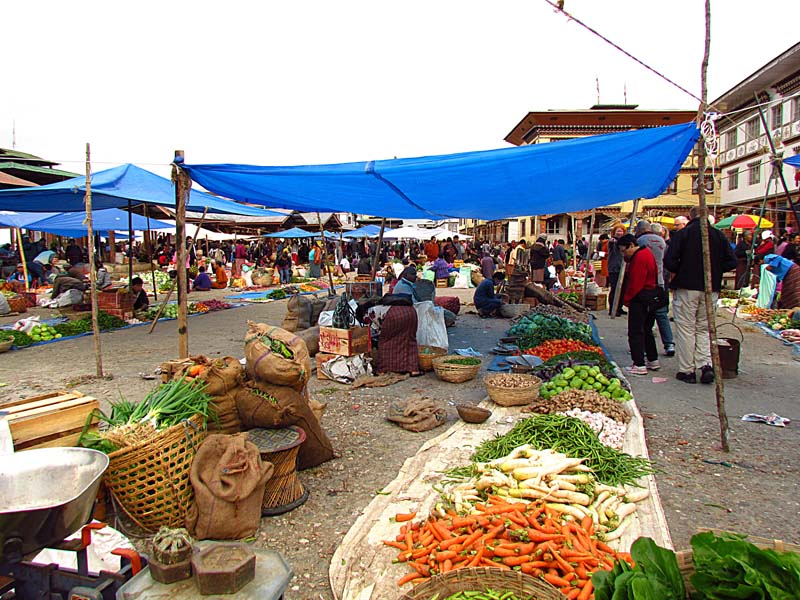
Paro's local market.We saw dried yak cheese,
raw meat, rice, and all kinds of fruits and vegetables.
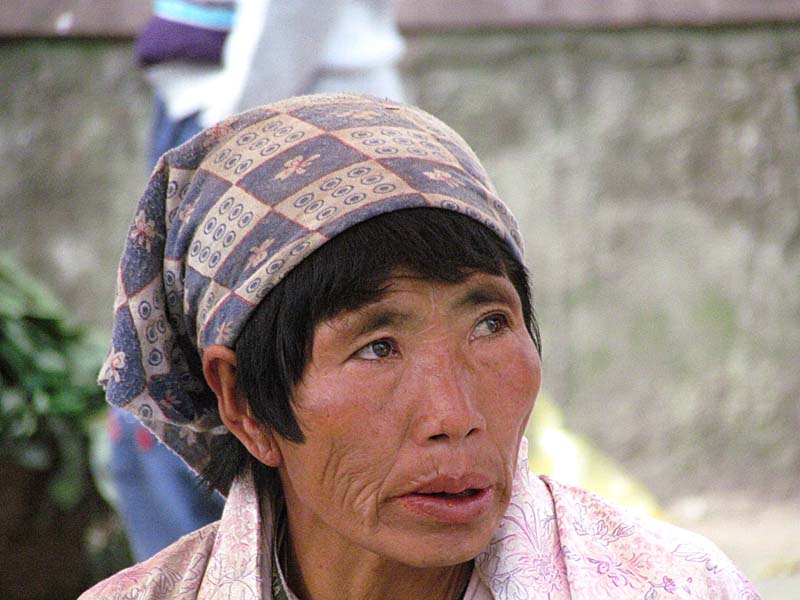
Female vendor at the local market in Paro
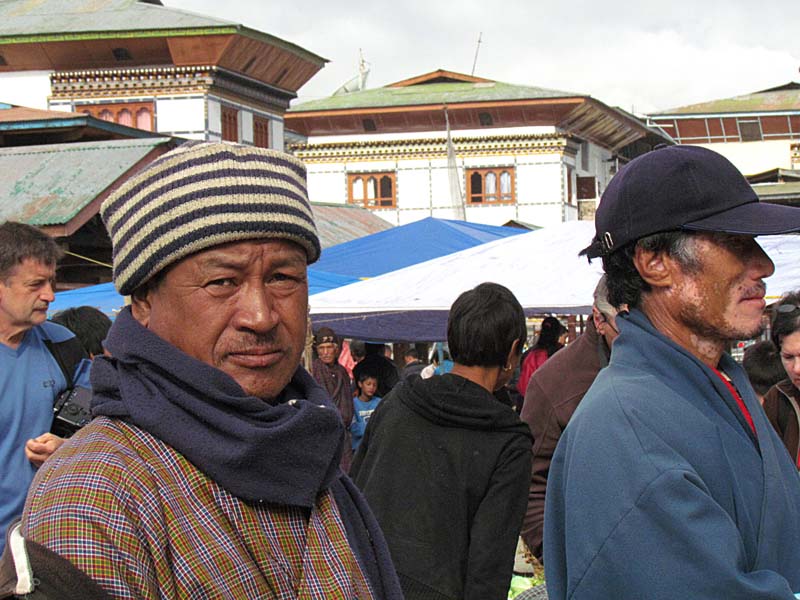
Shoppers at the local market
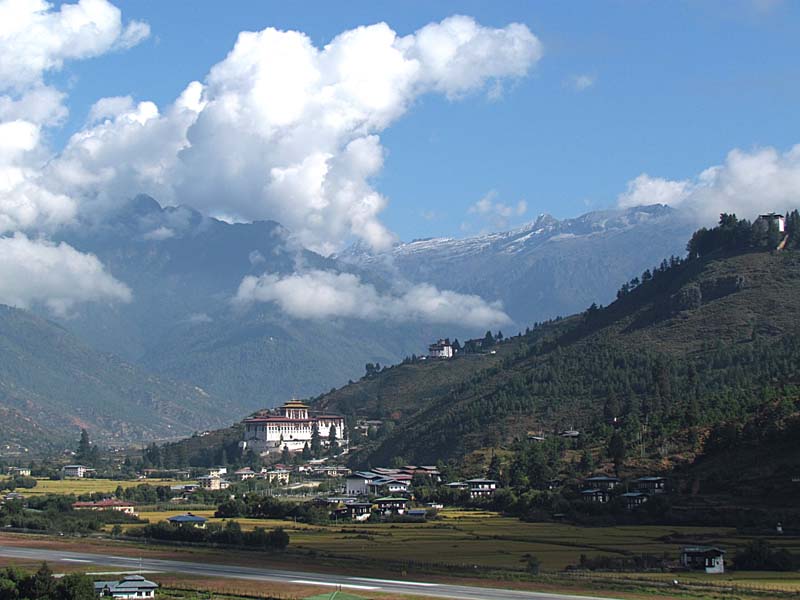
Paro Dzong (fortress) and Paro valley with Himalayas in the background
The Dzong is the administrative seat of the district of Paro, and also contains a state monastic community of about 200 members.
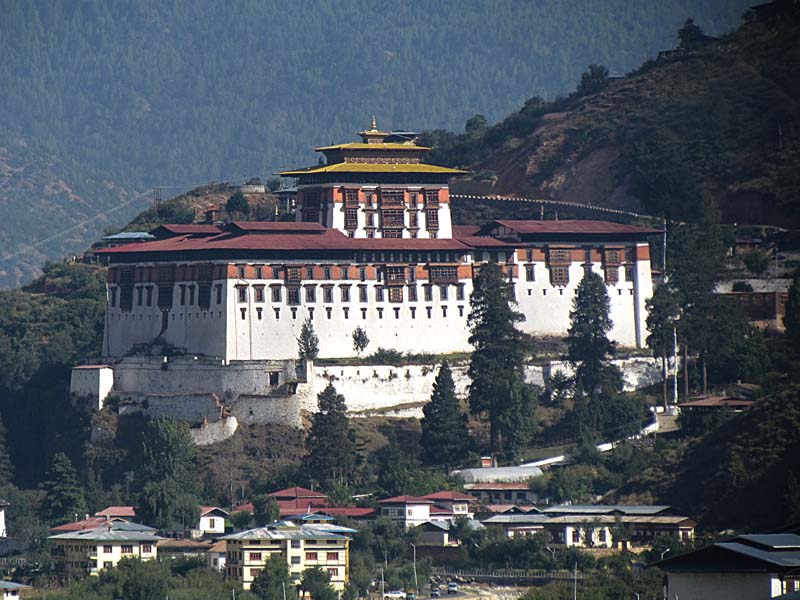
The construction of the Paro Dzong was started in 1644 by the order of Zhabdrung Ngawang Namgyal, the unifier of modern day Bhutan.
Unlike most of the other Dzongs in Bhutan, it survived the massive 1897 earthquake mostly intact, though it was damaged by fire in 1907.
It was damaged in the most recent earthquake just before we visited Bhutan.
Paro Dzong’s full name is Ringpung Dzong, which means ’the fortress of the heap of jewels."
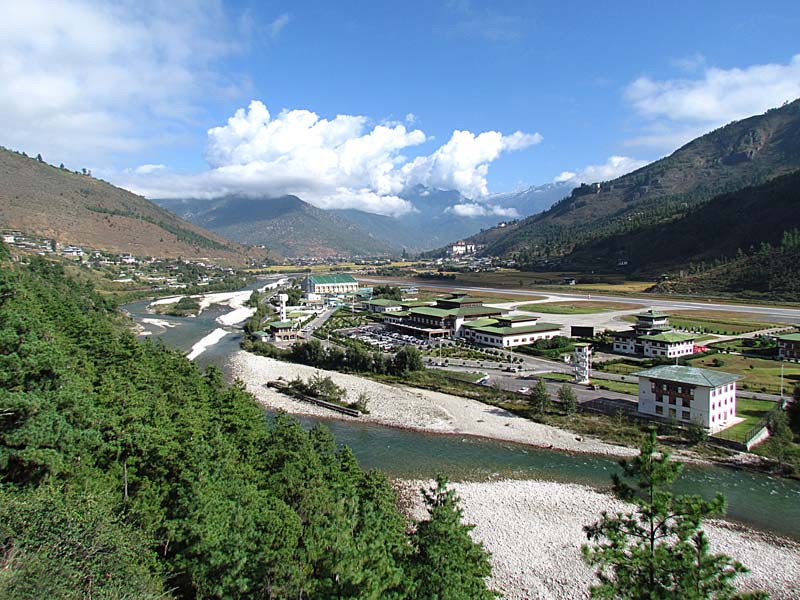
View of Paro International Airport, the only international airport in Bhutan. The only airline, Druk Air, has a total of 3 planes, so air traffic
in
and out of Bhutan is quite limited. The economy, one of the world's smallest and least developed,
is based on hydroelectricity,
tourism, agriculture, and forestry. Rugged terrain makes it difficult to develop roads and other infrastructure.
Despite this constraint, hydroelectricity and construction continue to be the two major industries of growth for the country.
As these two economic sectors contribute to increased productivity, Bhutan's development prospects are positive.
The Bhutanese Government expects the tourism sector to expand as well; however,
restrictions on visitor numbers and minimum per-day spending requirements will inhibit rapid growth.
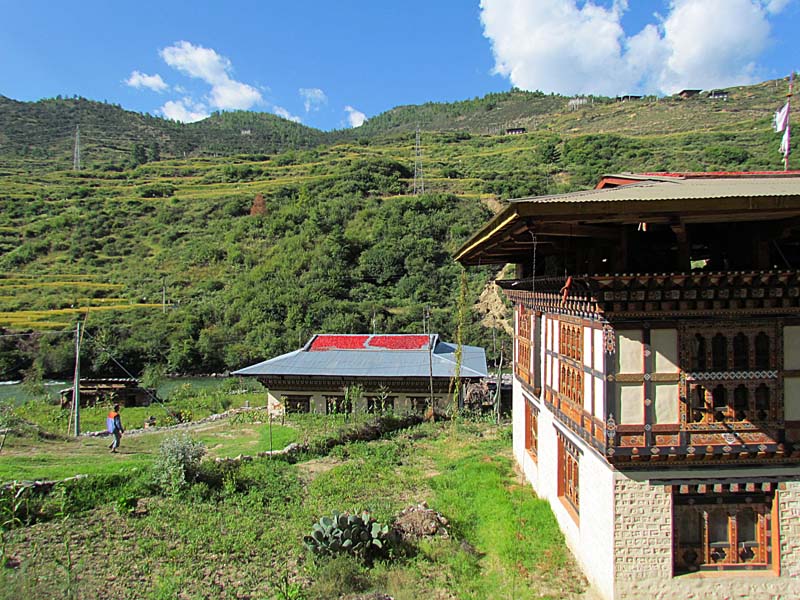
Red peppers drying on top of both roofs.
The Bhutanese diet is rich in meat and poultry, dairy, grain and vegetables.
Rice and chillies are the major features of Bhutanese diet.
Emadatse (chilly pepper and cheese stew) is considered the national dish with many interpretations of this recipe throughout the country.
Poultry and meat dishes, pork, beef and yak, are lavishly spiced with chillies, and it is common to see bright red peppers drying on rooftops in the sun.
Salted butter tea, or suja, is served on social occasions. Chang, a local beer, and arra, a spirit distilled from rice, maize,
wheat or barley, are also common.
Doma or betel nut is offered as a customary gesture of greeting.
The chillies are considered a vegetable and not just a spice. Bhutanese dishes are mostly fiery, though we were spared the really hot stuff with the
food we were served.
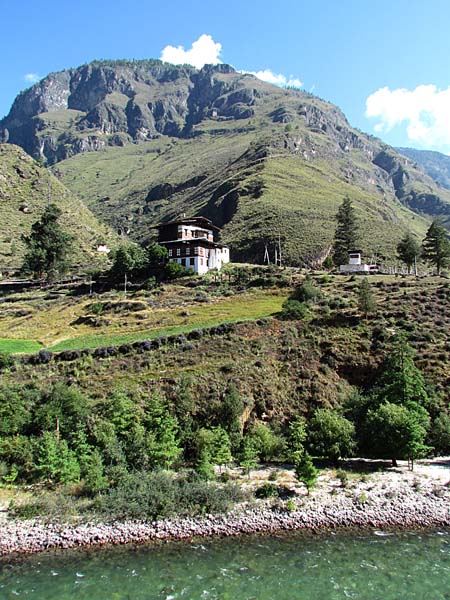
Monastery on the hillside above the Paro River
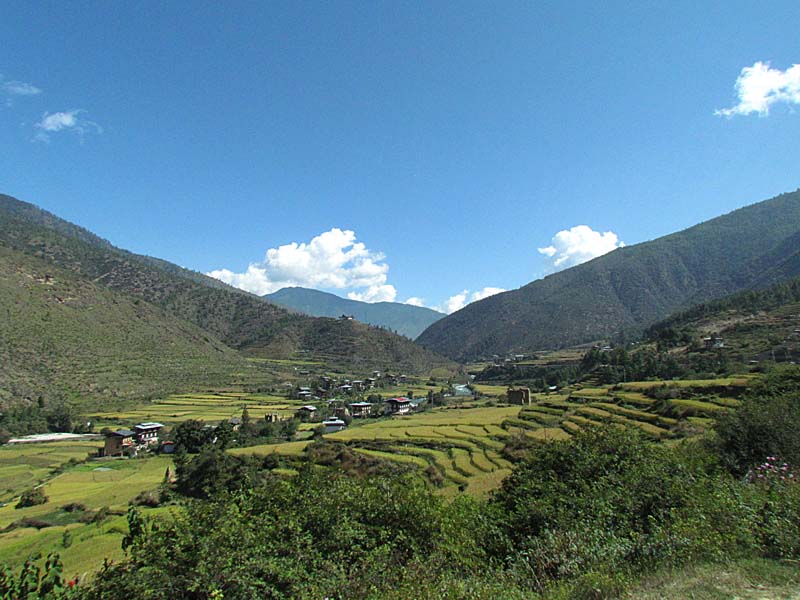
Rice fields and farm homes as seen while driving to Dochula Pass from Paro
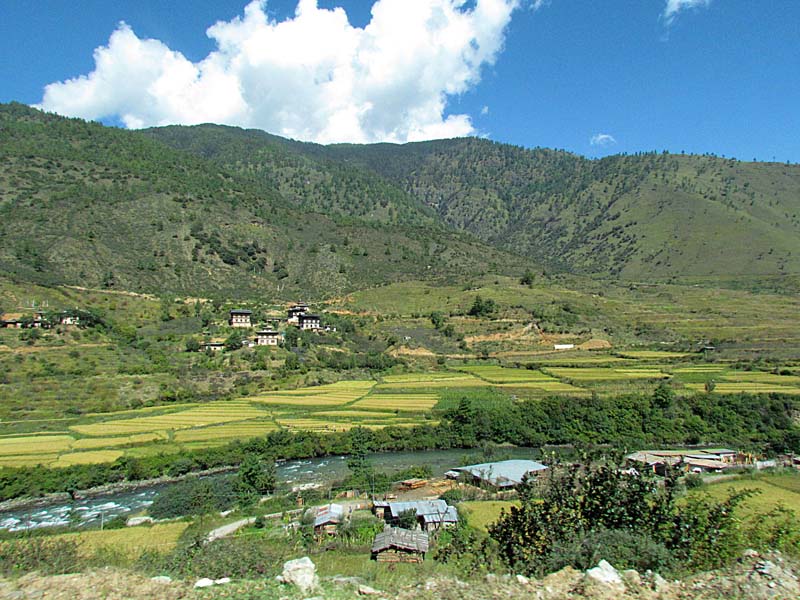
We followed the Paro River to Thimphu, the capital city of Bhutan, and drove through Thimphu on the way up to Dochula Pass.
The Bhutanese grow red rice, a medium-grain rice. It is the staple rice of the Bhutanese people.
It is semi-milled - some of the reddish bran is left on the rice. Because of this, it cooks somewhat faster than an unmilled brown rice.
When cooked, the rice is pale pink, soft and slightly sticky.
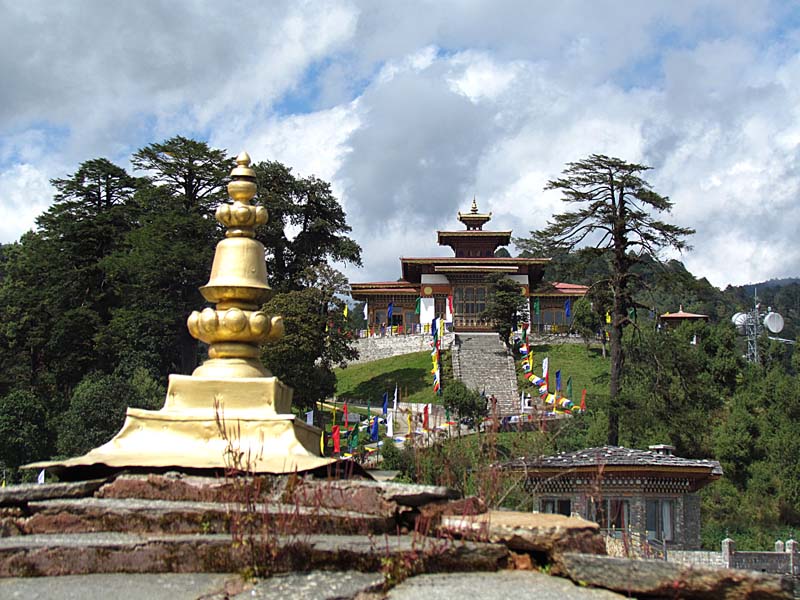
Dochula Pass, 10,000 feet. The Pass has occasional views of the high peaks of the eastern Himalayas but usually these peaks are covered
by clouds. We did occasionally see some peaks between moving clouds while we were at this Pass.
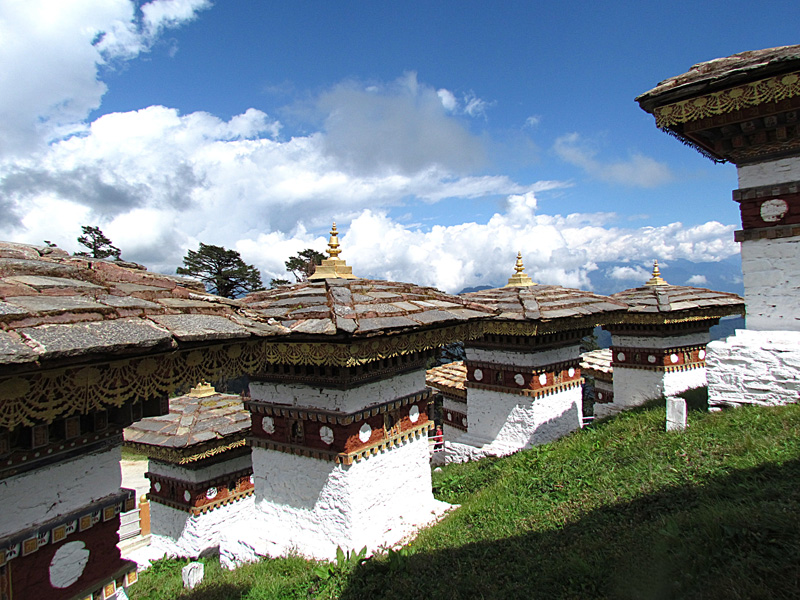
Druk Wangyal Chorten - 108 stupas at Dochula Pass, looking toward the Himalayas.
In 2003, Bhutan was pushed towards war. Indian terrorists were hiding in Bhutan, and the Indian government gave Bhutan an ultimatum
of either driving the rebels out or the Indian Army would be forced to cross the border and do it themselves.
Bhutan wanted to avoid a conflict, with an army of only 7,000 enlisted men, facing tens of thousands of rebels.
So, the king made it voluntary for the soldiers, and personally led the campaign against the rebels. The mini-war was a success,
and the rebels were routed with a minimal loss to the Bhutan army. Some wanted to erect a monument for the victory,
but the King replied that war should never be glorified. So instead this monument was of 108 stupas was commissioned
honoring the dead soldiers and the dead rebels from the conflict and the King for peace and stability.
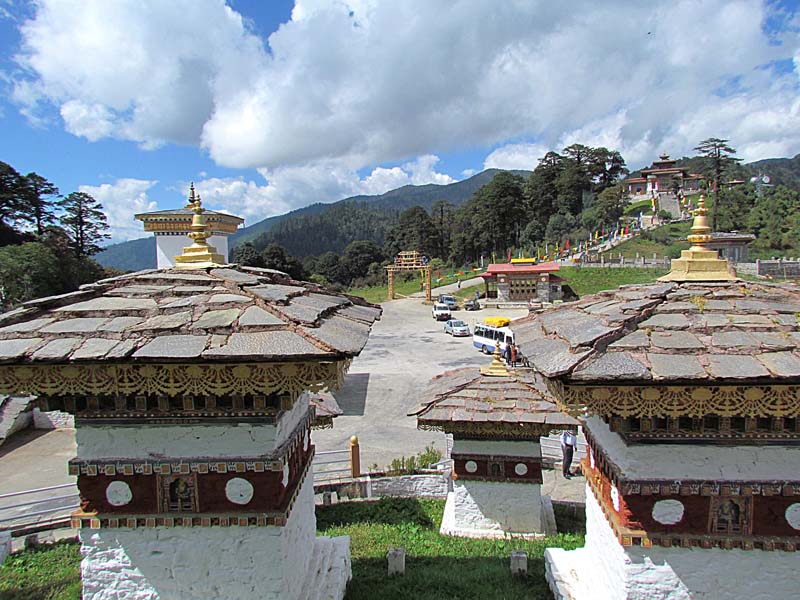
View from the 108 stupas at the Pass, looking at a temple across the way. The Bhutanese word for a stupa is Chorten.
A stupa is a spiritual monument.
Every stupa contains holy relics. Chortens were originally built
to keep the relics of the Buddha and other Buddhist saints but with time, building a stupa is considered a pious thing to do,
and the builders and those who pay to make a chorten are believed to earn merit for it.
Chorten or a stupa is considered to
support faith and represent Buddha’s Body. The chorten has always been an object of faith and devotion
for the entire Buddhist world. All the major monasteries have their own chortens, typically preserving the remains of the
Head Lama. The walls of are painted from inside with murals, each telling a different story. Chortens may be built in various styles.
The most common one
in Bhutan is called Khangtseg, which is simply a building with a square base,
enclosed on all four sides sealing sacred objects and relics inside it and an ornamental roof.
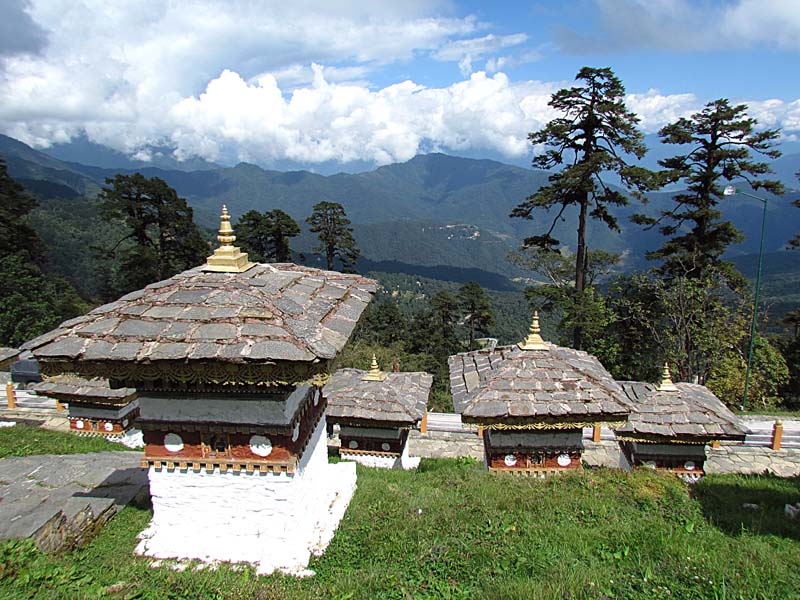
Looking from the 108 stupas toward the northern Himalayan border with Tibet.
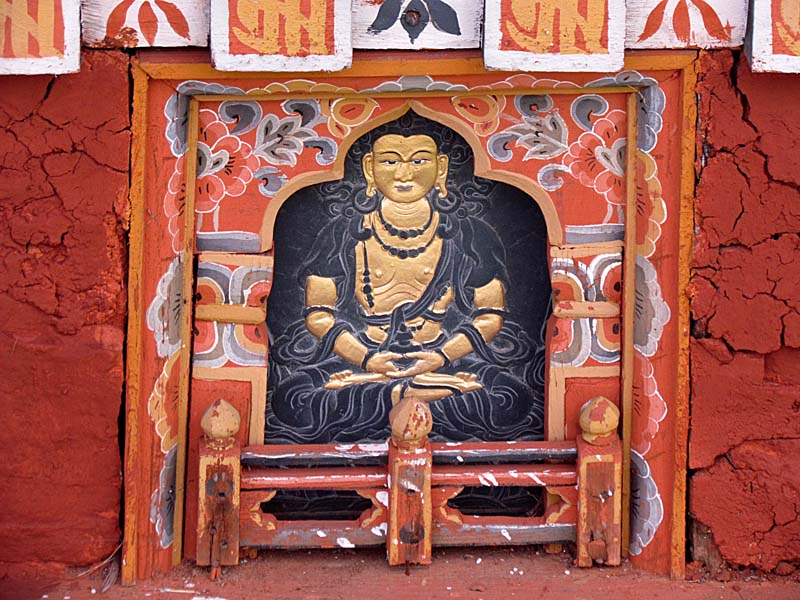
Exterior art work on one of the 108 stupas at Dochula Pass
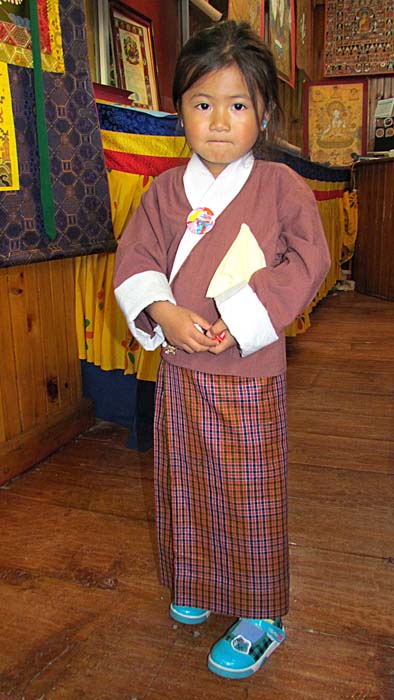
Child of the vendor at the gift shop of a teahouse where we stopped at Dochula Pass.
She's wearing the national dress for women.
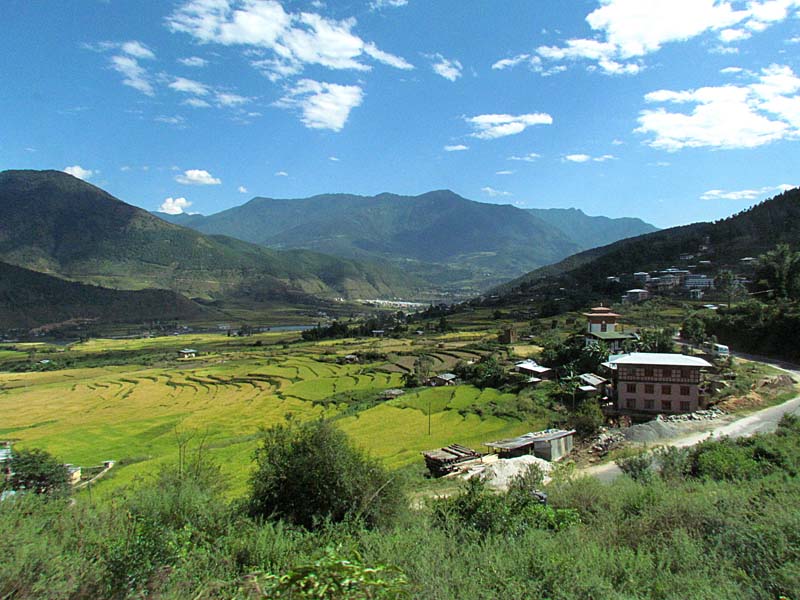
Punakha valley. Before Thimphu was the capital of Bhutan, Punakha was the capital because of its more temperate climate.
Today it is the winter seat of the Je-Khenpo (Chief Abbot) and the central monk body.
In 2008, the office of the Je Khenpo was codified
as part of the Constitution. The King appoints the Je Khenpo as the spiritual leader of Bhutan. The position is a powerful one
and the Je Khenpo is typically viewed as the closest and most powerful advisor to the King.
His primary duty is to lead the Commission for the Monastic Affairs of Bhutan, which oversees the Central Monastic Body,
and to arbitrate on matters of doctrine, assisted by lopons (learned masters).
Link to Page Three - Bhutan Continued - Overland to Punakha
Pat's Home Page